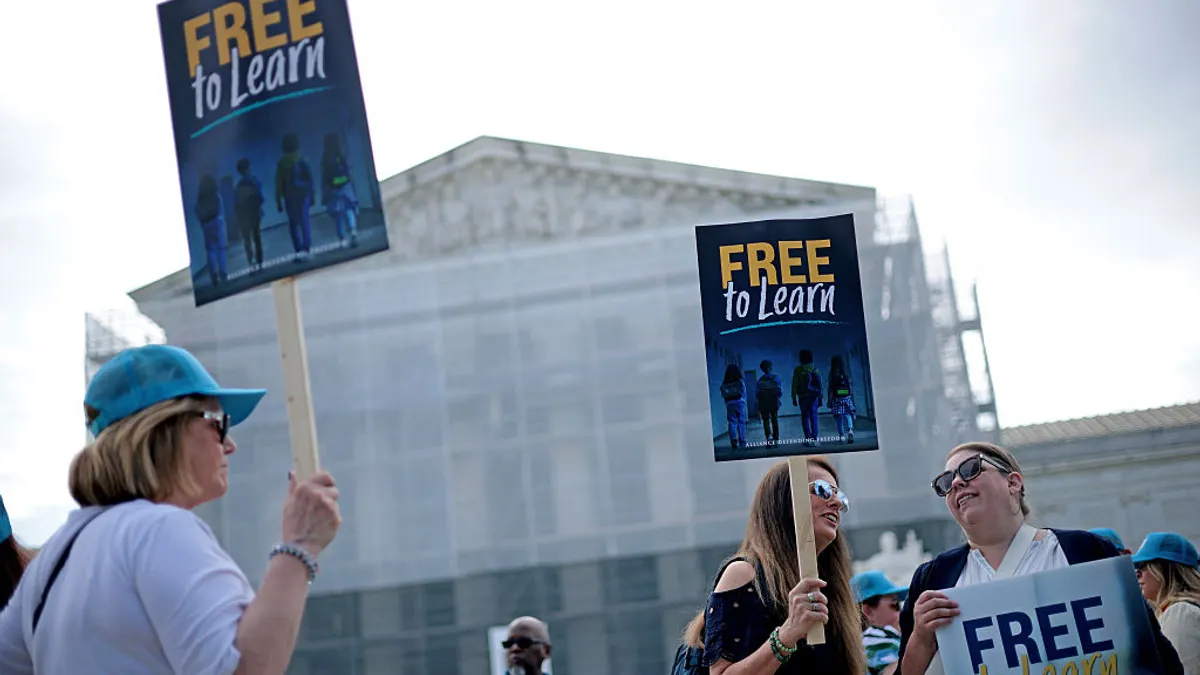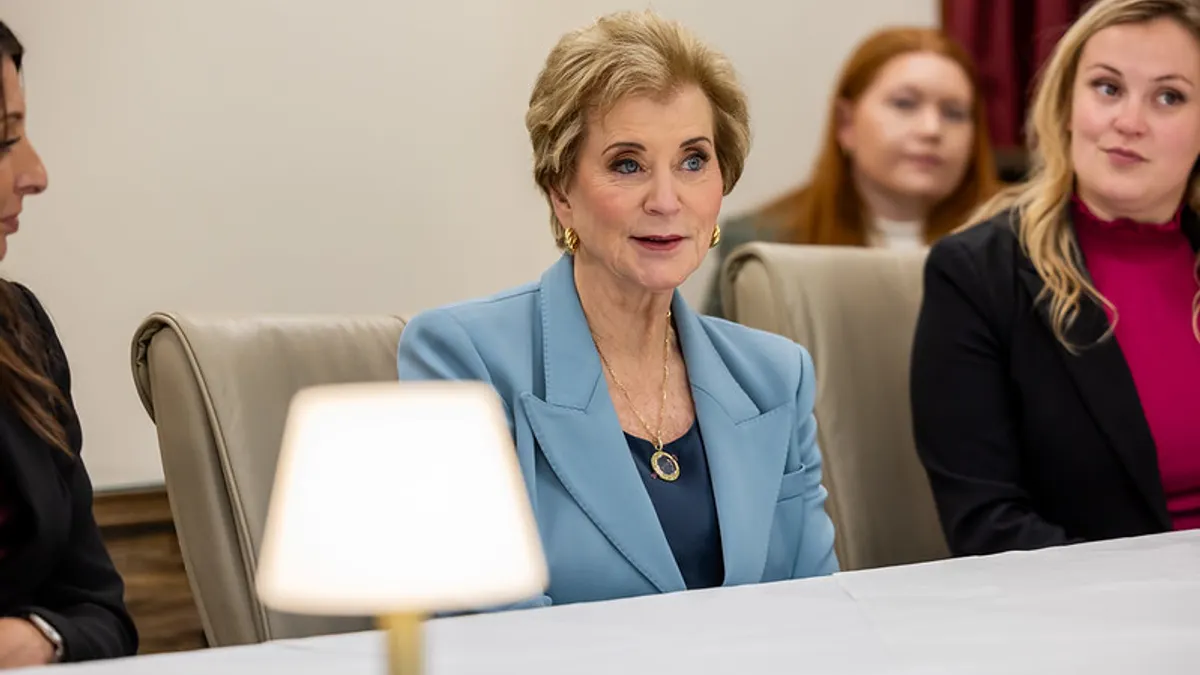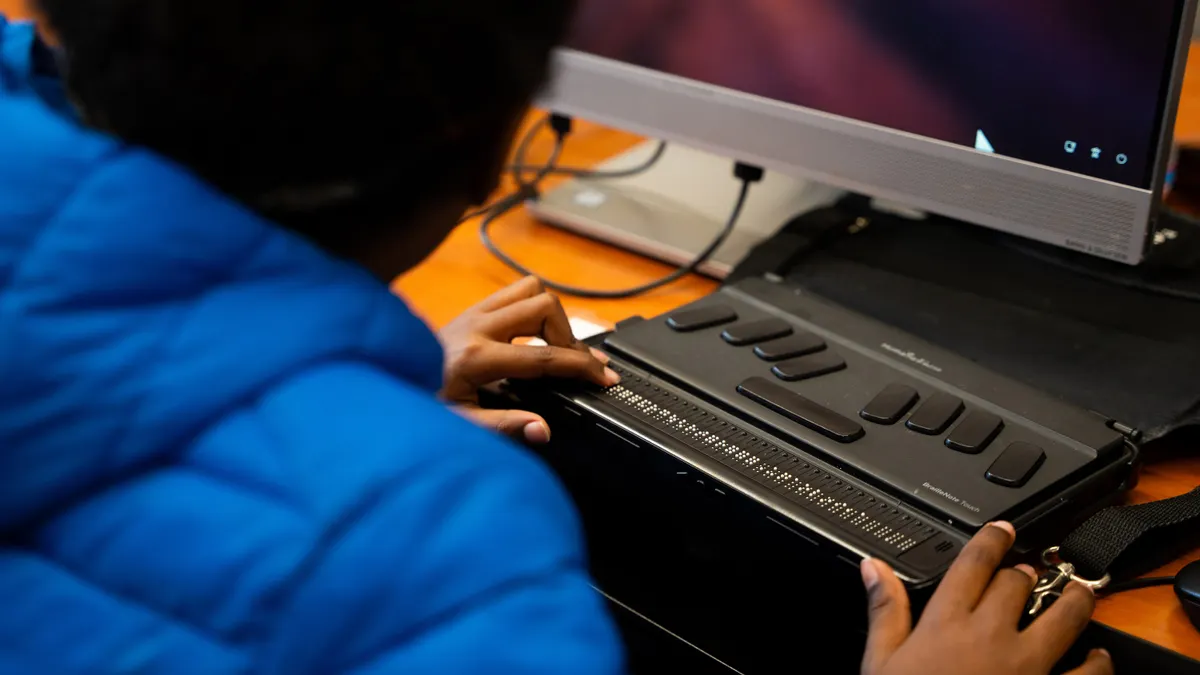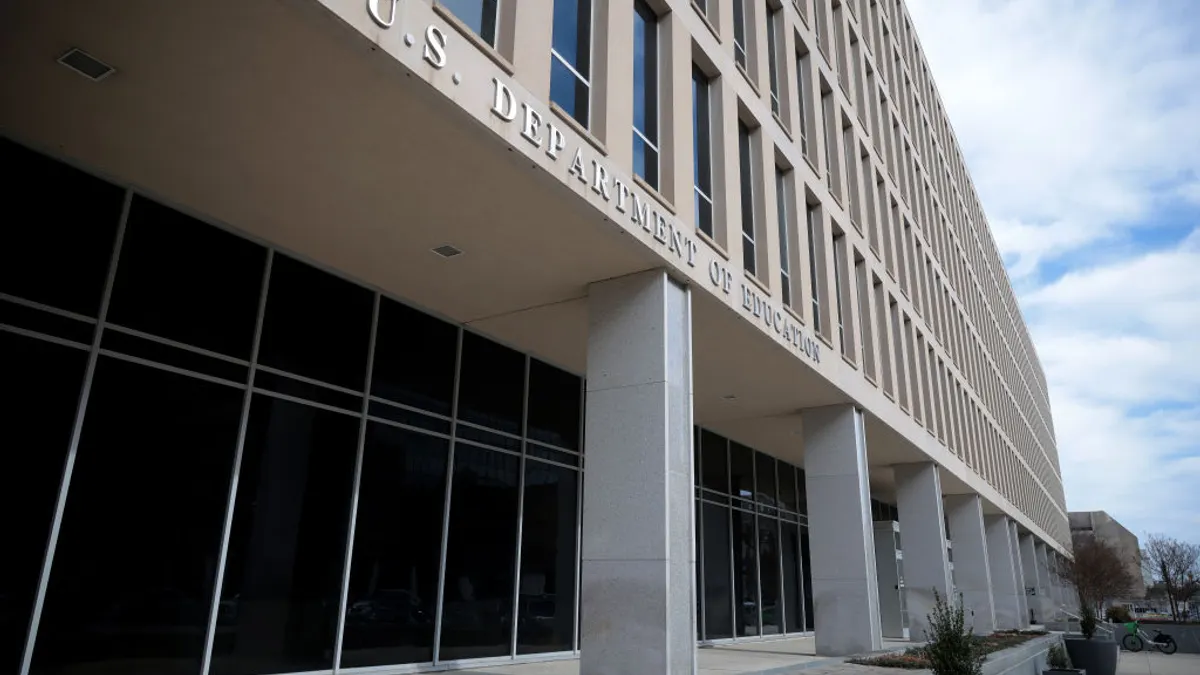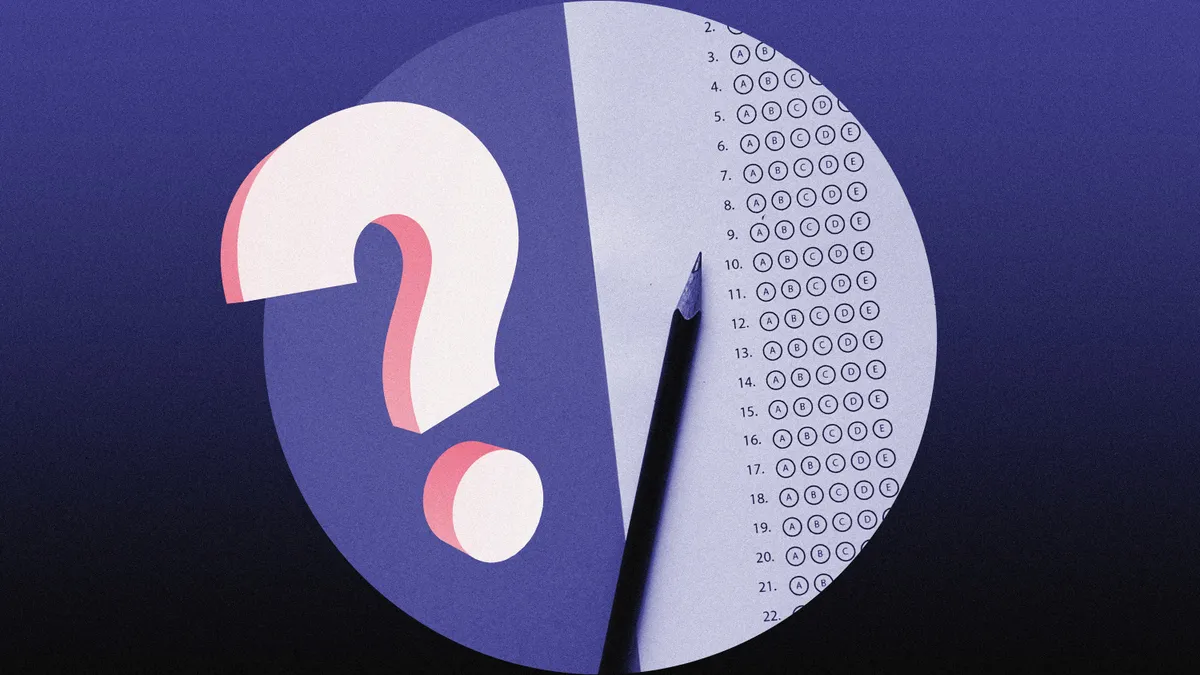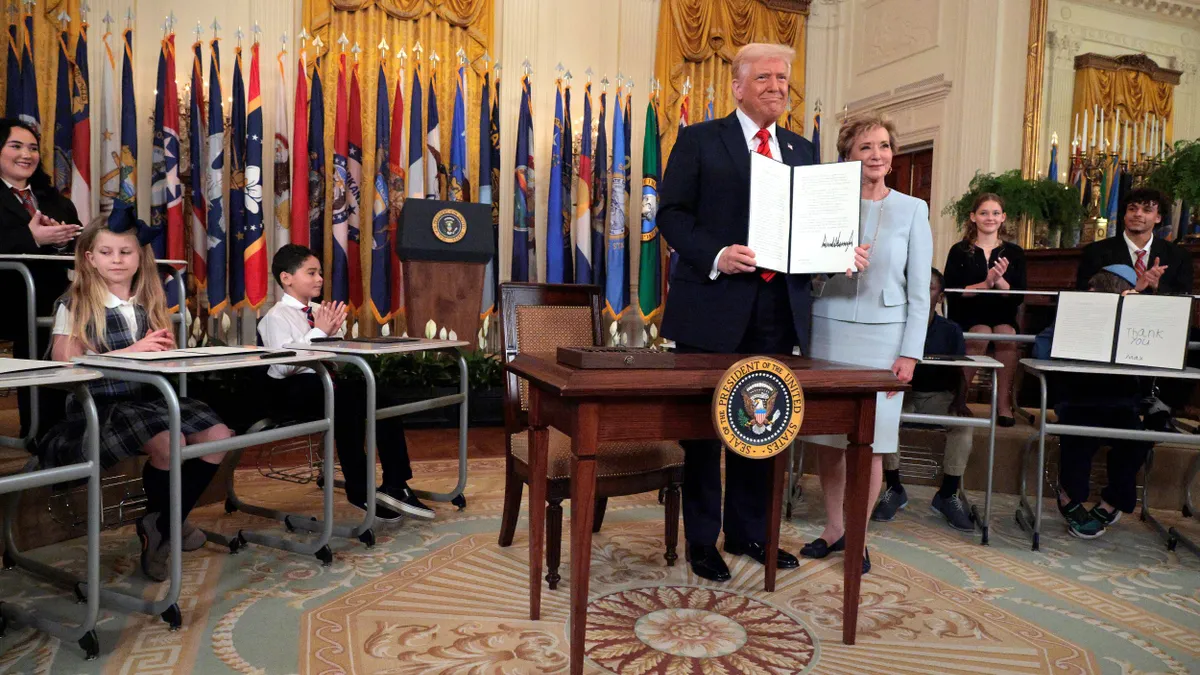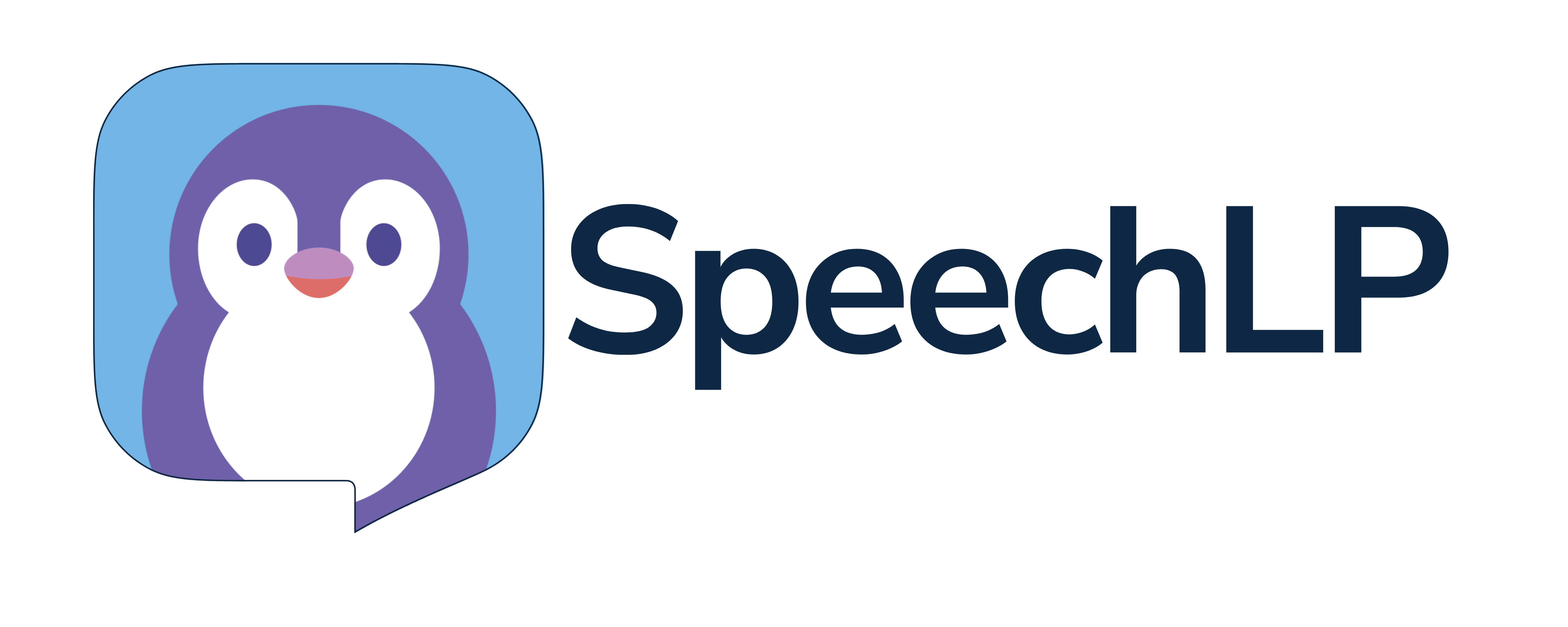Public charter schools should be praised for closing student achievement gaps and successful models should be replicated, said Republican lawmakers at a House hearing Wednesday. Democrats urged support for traditional public schools and raised concerns about charters' closure and racial segregation rates.
The hearing held before the House Subcommittee on Early Education, Elementary and Secondary Education sought to highlight proven charter school programs and expand on those approaches, said subcommittee Chair Kevin Kiley, R-Calif.
"Over the past 25 years, charter schools have emerged as the single most impactful reform in American public education, designed to provide public, tuition-free alternatives with increased flexibility in exchange for accountability," Kiley said.
But it's that accountability piece that's missing in some charter programs, leading to racially isolated charter schools that have underqualified teachers, fewer advanced courses and higher risk of closures, said ranking member Rep. Suzanne Bonamici, D-Ore.
“At their best, they offer potential for innovation, flexibility and responsiveness to community needs. But at their worst, and too often in practice, they operate without adequate oversight, without sufficient safeguards for civil rights, and without the transparency required of traditional public schools," Bonamici said.
Charter schools have traditionally been a bipartisan issue in Congress, but as the public and private school choice movement grows, lawmakers are increasingly highlighting the benefits and drawbacks of the two public options.
Here are three takeaways from Wednesday's hearing, which was held during National Charter Schools Week.
Charter debate remains contentious
Some lawmakers at the hearing cautioned against pitting traditional public schools against charter schools — even while members and witnesses compared and criticized student performance levels at both school models.
David Griffith, associate director of research at the Thomas B. Fordham Institute, spoke about research he's conducted, as well as other studies, showing positive academic benefits of charter school participants, as well as improvements to traditional public schools as a result of competition from charter schools.
"Charter schools are not a silver bullet, but they have demonstrated their ability to raise student achievement and improve public education systems," Griffith said.
Genevieve Siegel-Hawley, professor of educational leadership at Virginia Commonwealth University, said her research into charter programs reveals areas of concern, including the "persistence of deep inequality and lack of civil rights protections."
For example, she said she found that Black and Hispanic charter school students are more likely to attend segregated schools with harsh discipline practices and fewer challenging or college prep courses. Those schools also had a higher likelihood of closure, higher teacher and leadership turnover, and less experienced teachers than black and Hispanic students in traditional public schools.
"Even though charter schools can shape enrollment to their advantage, unlike traditional public schools that must serve all assigned students, charter school student achievement and outcomes remain a mixed bag," Siegel-Hawley said.
Rep. Burgess Owens, R-Utah, said the expansion of school choice is driving innovation and better outcomes in education. "The choice is clear: Do we empower families with options or keep listening to the same broken system?"
But some lawmakers denounced disinvestment in traditional public schools.
"A local public neighborhood school is the heartbeat of the community, and you're destroying that," said Rep. Frederica Wilson, D-Fla. "Public schools are meant to educate everyone — students with disabilities, the gifted, the wheelchair bound, the sick, the struggling, the shut in, the orphan, the ungovernable, everyone. It's a big tent. Charter schools, on the other hand, cherry-pick and fall short of the promise."
What makes a high-quality charter?
Eva Moskowitz, founder and CEO of Success Academy Charter Schools, told the panel that for the last eight years, 100% of Success Academy graduates have gone to 4-year colleges, and 95% of students have taken and passed at least one AP course.
"Providing a structured, joyful, focused learning environment with an exceptional teacher training and education training program is really our secret sauce," Moskowitz said.
Moskowitz said the charter school network last year received 28,000 applications for 3,000 spots and that admission is done through a lottery. She added that the student racial and socio-economic demographics of enrolled students are similar to public school districts where the Success schools are located.
Darryl Cobb, president of the Charter School Growth Fund, which supports the expansion of high-performing charter schools, said the growth fund portfolio includes more than 1,400 high-quality charter schools serving more than 760,000 students across 34 states, and 75% of those students are from economically disadvantaged backgrounds.
In written testimony, Cobb said high-performing charter schools share common traits, including:
- Demand from parents and the community for high-quality school options.
- Capable school leadership teams.
- Strong academic performance over multiple years that includes academic growth from student subgroups.
- Desire for expansions based on demand from the community for spots in schools.
Siegel-Hawley said charter schools can be more equitable by having user-friendly application systems, by providing free transportation, and by being accountable for enrolling a diverse student population.
Federal legislation is in the works
Kiley and Bonamici highlighted bills currently in Congress or being planned for introduction that relate to the charter school debate. For instance, the High-Quality Charter School Act, co-sponsored by Kiley, would provide a new tax credit for charitable contributions to nonprofit charter school organizations.
If the bill became law, about 6 million more students would be able to enroll in charter schools with proven records of success, said Kiley, who also expressed disappointment the measure wasn't included in a budget reconciliation package that contains a national private school choice tax incentive.
In fall 2021, public charter schools enrolled 3.7 million students and traditional public schools enrolled 45.4 million students, according to the National Center for Education Statistics.
Bonamici and other Democratic lawmakers said the federal government should prioritize supports for traditional public schools, which are attended by most students. She promoted the Strength in Diversity Act and the Equity and Inclusion Enforcement Act, both of which she said offer targeted support to school districts that are working to develop, implement and expand desegregation initiatives.
She also highlighted the Championing Honest and Responsible Transparency in Education Reform Act, or CHARTER Act, that would prevent for-profit organizations from managing charter schools.
Bonamici said the bills would help close achievement gaps, support integration and accountability, and fulfill the vision laid out in the U.S. Supreme Court ruling in Brown v. Board of Education, which turns 71 on Saturday.
"If we're serious about giving every child, regardless of race or ZIP code, the opportunity to thrive, we must design our school system to deliver on that promise," said Bonamici.


